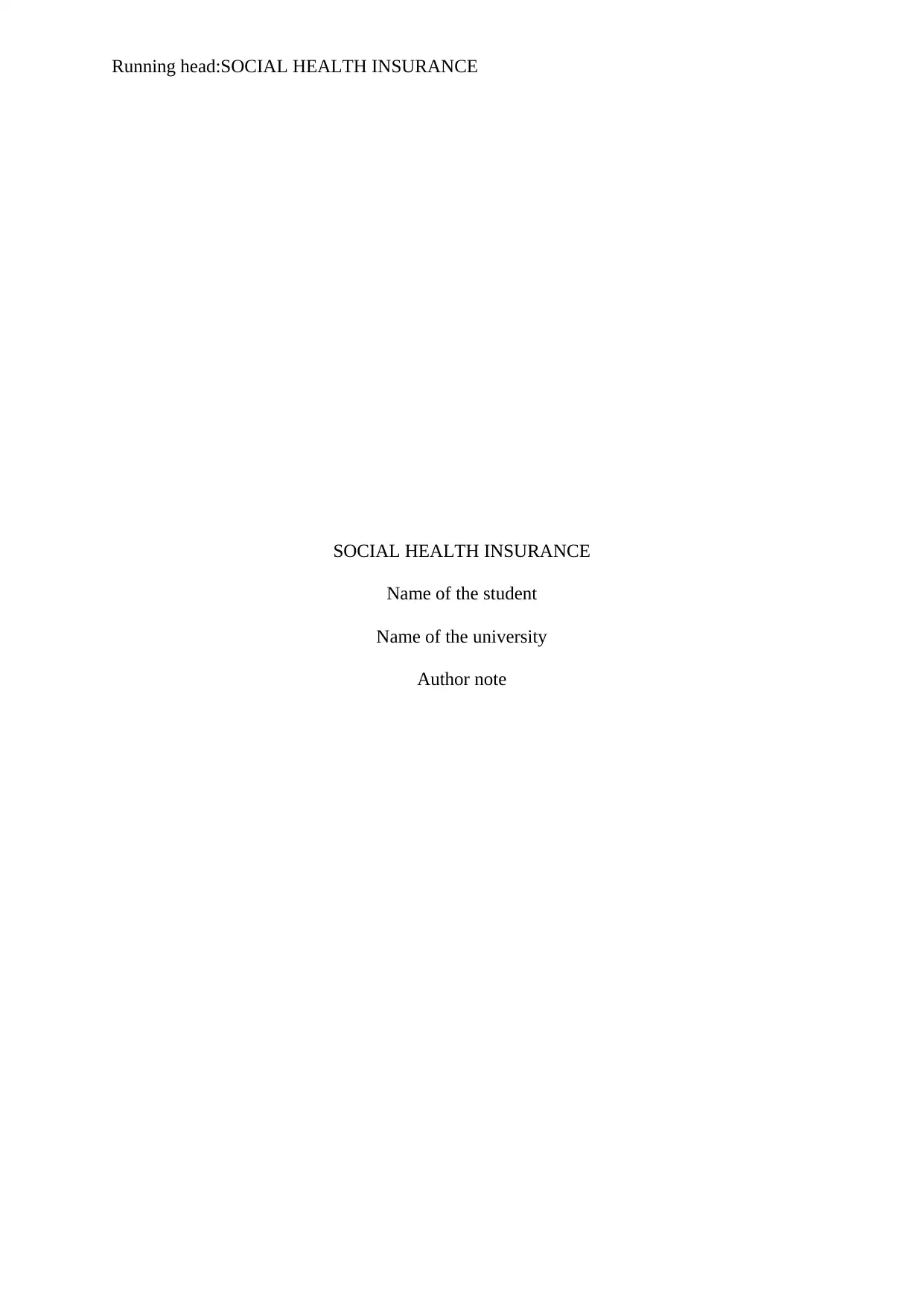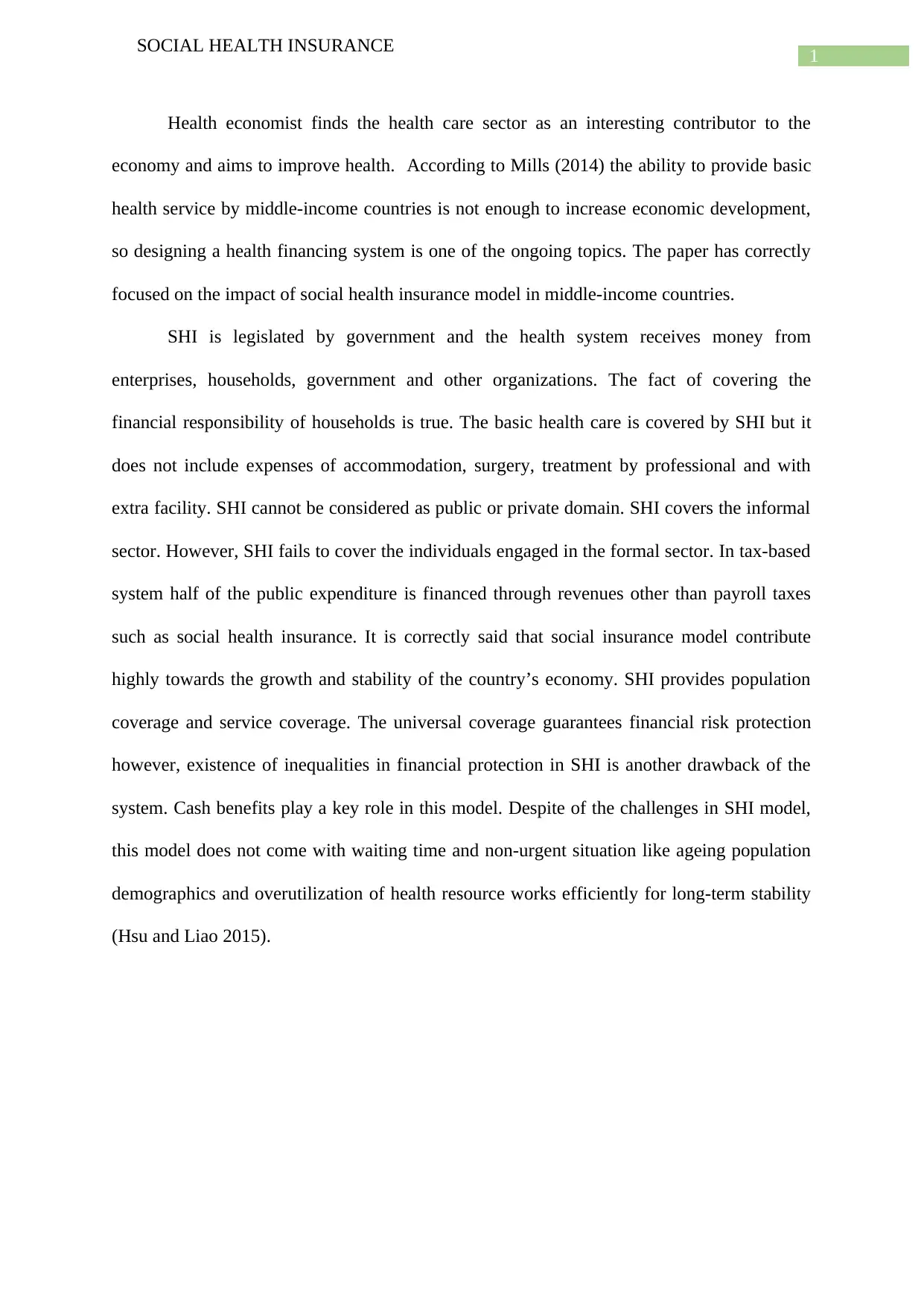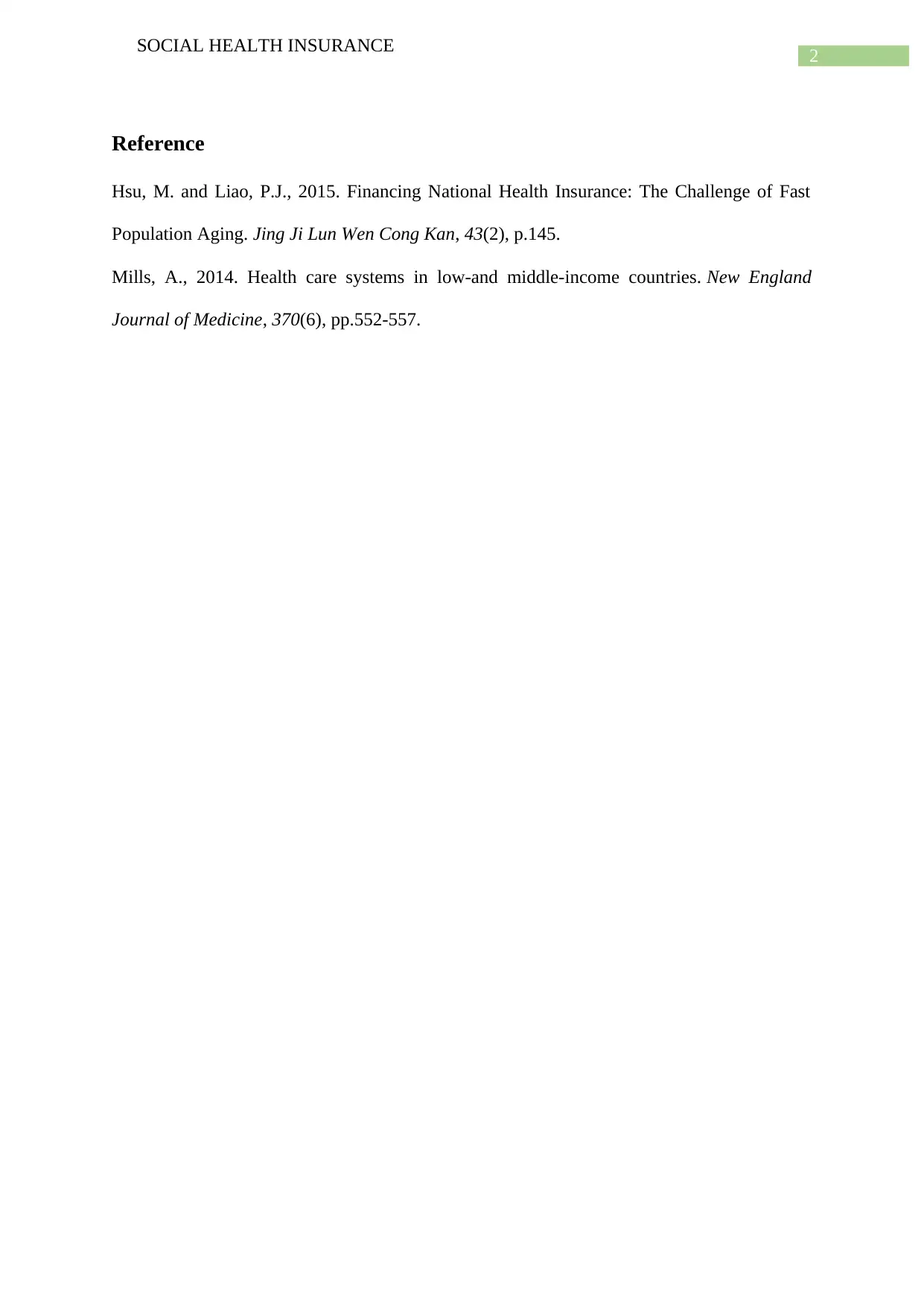Economic Analysis of Social Health Insurance in Developing Nations
VerifiedAdded on 2022/08/13
|3
|377
|204
Report
AI Summary
This report examines the impact of the Social Health Insurance (SHI) model on middle-income countries, emphasizing its role in healthcare financing and economic stability. The author highlights that SHI, often legislated by governments, receives funding from various sources including enterprises, households, and government, thereby covering a significant portion of the financial responsibility for healthcare. While SHI typically covers basic healthcare, it may exclude expenses like accommodation and specialized treatments. The report notes that SHI contributes to population and service coverage, offering financial risk protection, but also acknowledges the existence of inequalities in this protection. It discusses the importance of cash benefits in this model and emphasizes the long-term stability benefits, such as efficient resource utilization. The report references key literature to support its analysis, including the works of Mills (2014) and Hsu and Liao (2015), to provide a comprehensive understanding of the SHI model's strengths and weaknesses in these economies.
1 out of 3










![[object Object]](/_next/static/media/star-bottom.7253800d.svg)